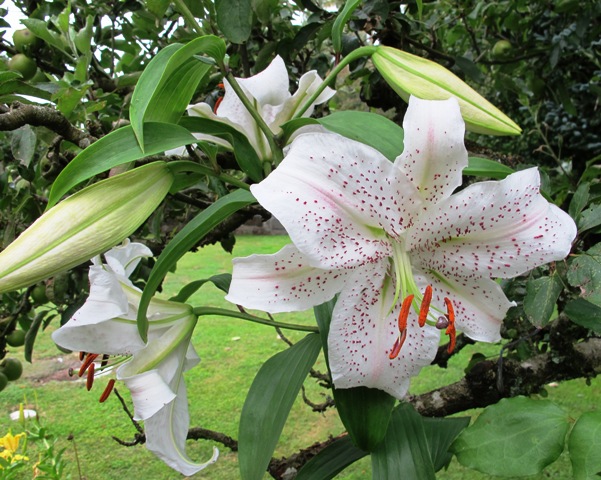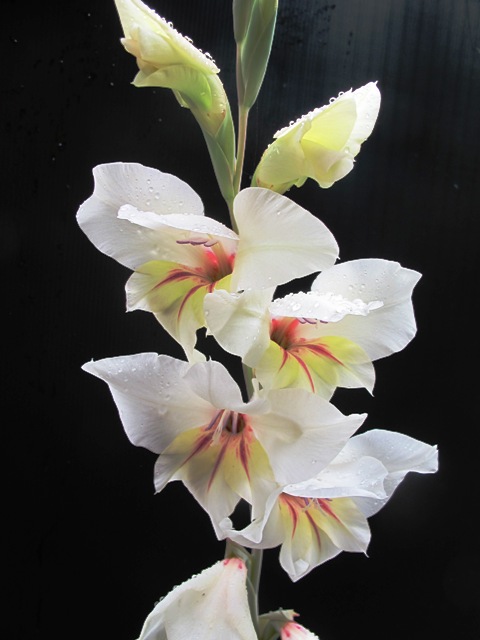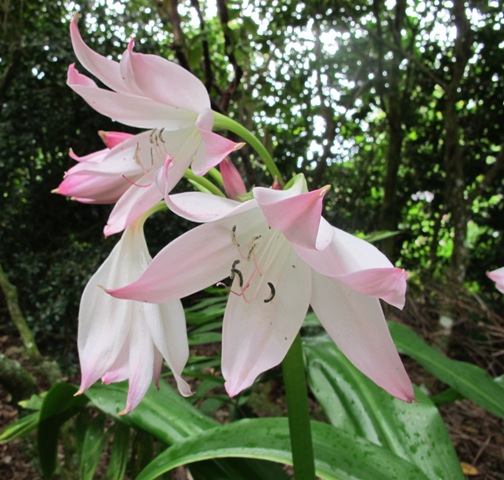 As 2018 draws to a close, I decided that I do not have anything to say on new year gardening resolutions that I have not said before. At a personal level, I am resolved to finally complete the two gardening books that have been percolating in my head for several years. This is the first time I have stated that intention publicly. One is at the point of being ready to hand over to an external editor, the other is still in progress. More on them, I hope, as they near publication.
As 2018 draws to a close, I decided that I do not have anything to say on new year gardening resolutions that I have not said before. At a personal level, I am resolved to finally complete the two gardening books that have been percolating in my head for several years. This is the first time I have stated that intention publicly. One is at the point of being ready to hand over to an external editor, the other is still in progress. More on them, I hope, as they near publication.
Then the latest posts from a Canadian gardener, Pat Webster, landed in my inbox, charting her garden through the year. I was a bit gobsmacked at four months of snow on the ground. It snowed here once. That is once in recorded history. I am not sure what I would do in a climate with months of snow. I guess one switches to indoor pursuits.
It is different here where we garden all year round and can expect flowers every day of the year. I have thousands of photographs so finding 12 different garden scenes representing a month each took a bit of effort. It would have been much easier had I just gone for flower close-ups but some readers may like to see the different contexts. Best viewed on a larger screen, of course…
 Firstly, January is for lilies. We like our lilies, a whole range of different types, but none more so than the golden Aurelians opening now, to be followed by the OTT auratums which we have in abundance. The new lily border should be a show-stopper this year after our concerted efforts to outwit Peter Rabbit and his extended family, but in the meantime, I give you the auratums in the woodland – planted maybe two decades ago and left entirely to their own devices in the time since.
Firstly, January is for lilies. We like our lilies, a whole range of different types, but none more so than the golden Aurelians opening now, to be followed by the OTT auratums which we have in abundance. The new lily border should be a show-stopper this year after our concerted efforts to outwit Peter Rabbit and his extended family, but in the meantime, I give you the auratums in the woodland – planted maybe two decades ago and left entirely to their own devices in the time since.
 February is peak summer here, when we get the most settled and warmest weather. And the Scadoxus multiflorus ssp katherinae are just astounding in the same woodland area as the previous photo. We never planted anywhere near this number. Over the years, they have just gently seeded down and taken over an entire area, so happy are they in our conditions. There aren’t too many people around this country who have scadoxus naturalised in their garden.
February is peak summer here, when we get the most settled and warmest weather. And the Scadoxus multiflorus ssp katherinae are just astounding in the same woodland area as the previous photo. We never planted anywhere near this number. Over the years, they have just gently seeded down and taken over an entire area, so happy are they in our conditions. There aren’t too many people around this country who have scadoxus naturalised in their garden.
 March is still summer here although the day length is shortening and the nights noticeably cooler. It used to be a very green time for us, because we have so much woodland garden and there is not a whole lot of high impact flowering in later summer woodland. We went to England three times to look at summer gardens and it is the sunny perennials that flower into this time. It has been really exciting putting in a large summer garden in full sun. I am extremely impressed by the echinaceas which flower from December to April and I have a very soft spot for the blue eryngium, even if I often need to put a stake in to hold them upright.
March is still summer here although the day length is shortening and the nights noticeably cooler. It used to be a very green time for us, because we have so much woodland garden and there is not a whole lot of high impact flowering in later summer woodland. We went to England three times to look at summer gardens and it is the sunny perennials that flower into this time. It has been really exciting putting in a large summer garden in full sun. I am extremely impressed by the echinaceas which flower from December to April and I have a very soft spot for the blue eryngium, even if I often need to put a stake in to hold them upright.
 By April, we can no longer pretend that summer will go on forever. The flowering of the Nerine sarniensis hybrids, the Cyclamen hederafolium and other autumn bulbs in the rockery tell us that time waits for no gardener and early autumn is upon us. We have long spring and autumn seasons in our part of the country.
By April, we can no longer pretend that summer will go on forever. The flowering of the Nerine sarniensis hybrids, the Cyclamen hederafolium and other autumn bulbs in the rockery tell us that time waits for no gardener and early autumn is upon us. We have long spring and autumn seasons in our part of the country.
 May brings us the early camellias in bloom, in this case Camellia sasanqua ‘Crimson King’ at the mill wheel bird bath just out from the back door. So too do the months right through to early October bring us camellias, but with advent of camellia petal blight, it is the early flowers that are the showiest, most abundant and the most charming now, which mostly means the sasanquas and quite a few of the species.
May brings us the early camellias in bloom, in this case Camellia sasanqua ‘Crimson King’ at the mill wheel bird bath just out from the back door. So too do the months right through to early October bring us camellias, but with advent of camellia petal blight, it is the early flowers that are the showiest, most abundant and the most charming now, which mostly means the sasanquas and quite a few of the species.
 June is early winter here. Definitely winter. I could have chosen Mark’s Daphne ‘Perfume Princess’ which flowers on and on through the winter months, but instead I picked Vireya Rhododendron macgregoriae. This particular plant has a special history for us and, unusually for a vireya, it flowers like clockwork every June and July. Most of this plant genus are less predictable in their flowering times, despite their trigger being day length, not temperature. As a result, we have vireyas flowering twelve months of the year, though we do have to place them in frost-free locations on account of them being subtropical.
June is early winter here. Definitely winter. I could have chosen Mark’s Daphne ‘Perfume Princess’ which flowers on and on through the winter months, but instead I picked Vireya Rhododendron macgregoriae. This particular plant has a special history for us and, unusually for a vireya, it flowers like clockwork every June and July. Most of this plant genus are less predictable in their flowering times, despite their trigger being day length, not temperature. As a result, we have vireyas flowering twelve months of the year, though we do have to place them in frost-free locations on account of them being subtropical.
 July is our bleakest, coldest month. But there is light ahead. July brings us snowdrops and by the end of the month, we have the earliest blooms opening on both the deciduous magnolias and the early michelias. Nothing shouts spring more than the earliest spring blooms. Mark would like some galanthus varieties that flowered later in the season as well and he has tried all that are available, but none of them compete with Galanthus ‘S. Arnott’ for showy and reliable performance and the ability to naturalise in his bulb meadows that are a long-term project.
July is our bleakest, coldest month. But there is light ahead. July brings us snowdrops and by the end of the month, we have the earliest blooms opening on both the deciduous magnolias and the early michelias. Nothing shouts spring more than the earliest spring blooms. Mark would like some galanthus varieties that flowered later in the season as well and he has tried all that are available, but none of them compete with Galanthus ‘S. Arnott’ for showy and reliable performance and the ability to naturalise in his bulb meadows that are a long-term project.

 August – yes there is a lot of snow on our Mount Taranaki. All the better to frame our Magnolia campbellii. There is well over 30km between the maunga (as we call the mountain) and our tree but each year I get out with my camera to close up the gap, as viewed from the path down to the park.
August – yes there is a lot of snow on our Mount Taranaki. All the better to frame our Magnolia campbellii. There is well over 30km between the maunga (as we call the mountain) and our tree but each year I get out with my camera to close up the gap, as viewed from the path down to the park.
 I gave September to the prunus, the flowering cherries. It is probably the campanulatas that are the showiest and they flower in August and I had already allocated that month to magnolias. But we grow quite a range of flowering cherries and this one is down in our wild North Garden, an area that we find particularly charming at this time of the year.
I gave September to the prunus, the flowering cherries. It is probably the campanulatas that are the showiest and they flower in August and I had already allocated that month to magnolias. But we grow quite a range of flowering cherries and this one is down in our wild North Garden, an area that we find particularly charming at this time of the year.
 October is mid spring. And for October, I chose the clivias yellow, orange and red, seen here with Hippeastrum papilio and dendrobium orchids in the Rimu Avenue. As I selected photos, I realised I was leaning to what we might call our backbone flowering plants – the ones we have a-plenty. Not all of them. I had to skip the azaleas, the michelias, the campanulatas and the hydrangeas owing to my self-imposed restrictions of one per month.
October is mid spring. And for October, I chose the clivias yellow, orange and red, seen here with Hippeastrum papilio and dendrobium orchids in the Rimu Avenue. As I selected photos, I realised I was leaning to what we might call our backbone flowering plants – the ones we have a-plenty. Not all of them. I had to skip the azaleas, the michelias, the campanulatas and the hydrangeas owing to my self-imposed restrictions of one per month.
 November brings us peak nuttallii and maddenii rhododendrons. The rhododendrons start in August, sometimes the first blooms as early as July, and flower well into December. But the beautiful nuttallis and maddeniis peak in November and are a source of great delight.
November brings us peak nuttallii and maddenii rhododendrons. The rhododendrons start in August, sometimes the first blooms as early as July, and flower well into December. But the beautiful nuttallis and maddeniis peak in November and are a source of great delight.
 Finally, December is marked by the Higo iris down in the meadow in our park. What prettier way to end the calendar year? And gardening being what gardening is, we start the cycle again with a new year. Best wishes to all readers for a happy and rewarding 2019.
Finally, December is marked by the Higo iris down in the meadow in our park. What prettier way to end the calendar year? And gardening being what gardening is, we start the cycle again with a new year. Best wishes to all readers for a happy and rewarding 2019.






